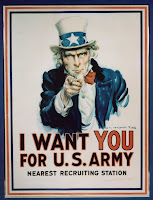 While I normally stick to New York history exclusively here, sometimes a national (or even international) conference comes up that promises to inspire New York historians toward greater understanding of the state’s history. The 2010 Agricultural History Conference – Local Stories, Global Connections: The Context of Agriculture and Rural Life – at the University of Central Florida and Rollins College on June 10-12, 2010 is one of those events thanks to New York’s important role in national and international agricultural history.
While I normally stick to New York history exclusively here, sometimes a national (or even international) conference comes up that promises to inspire New York historians toward greater understanding of the state’s history. The 2010 Agricultural History Conference – Local Stories, Global Connections: The Context of Agriculture and Rural Life – at the University of Central Florida and Rollins College on June 10-12, 2010 is one of those events thanks to New York’s important role in national and international agricultural history.
Here is the announcement:
Agriculture and rural life are tied to specific places, but those places are in turn bound to larger communities, often with global connections. The Agricultural History Society (AHS) invites proposals for papers that address the particular ways in which
people and places have shaped agriculture and rural living in their local communities as well as how rural ecosystems, production, processing, and consumption tie farmers and rural people to distant people, places, and institutions. Topics from any location or time period will be welcome. In the interest of promoting understanding of
the context of agriculture and rural life, the program committee wishes to encourage submissions of interdisciplinary and cross- national panels. We encourage proposals of all types and formats, including traditional papers/commentary sessions, thematic panel discussions, roundtables on recent books, and poster presentations, and we extend a special welcome to graduate students. We are able to provide up to $250
in travel reimbursement to each graduate student whose paper is accepted for the conference. We will consider submissions of full panels and individual papers, as well as paired or individual posters.
Submission Procedures
Complete session proposals should include a chair, participants, and, if applicable, a commentator. Please include the following information: An abstract of no more than 200 words for the session as a whole- a prospectus of no more than 250 words for each presentation- a mailing address, email, phone number, and affiliation for each participant- and a CV of no more than a page for each participant.
Individual submissions should include all the above except a session abstract.
Please send submissions, in Microsoft Word or RTF format, to [email protected].
Alternatively, applicants may mail five hard copies of their proposals
to:
Melissa Walker, Chair
Converse College
580 East Main St.
Spartanburg, SC 29302
Please direct questions regarding the program to any member of the program committee:
Melissa Walker, Chair, Converse College, [email protected]
Joe Anderson, Mount Royal College, [email protected]
Sterling Evans, University of Oklahoma, [email protected]
Angie Gumm, Iowa State University, [email protected]
Cecilia Tsu, University of California at Davis, [email protected]
 On Wednesday, November 18th, Bill Greer, the author of The Mevrouw Who Saved Manhattan, is giving a talk at the Brooklyn Public Library, Central Branch, at 7 p.m. The lecture, entitled “Sex and the City: The Early Years,” looks at the bawdy world of Dutch New York from 1624 to 1664. Through anecdotes of real people and events, the talk examines the libertine culture Europeans brought to the Hudson Valley and how this culture engendered an independent streak that fueled a rebellion of the common people against their rulers. This conflict, many historians argue, laid the foundation for the pluralistic, freedom-loving society that America became.
On Wednesday, November 18th, Bill Greer, the author of The Mevrouw Who Saved Manhattan, is giving a talk at the Brooklyn Public Library, Central Branch, at 7 p.m. The lecture, entitled “Sex and the City: The Early Years,” looks at the bawdy world of Dutch New York from 1624 to 1664. Through anecdotes of real people and events, the talk examines the libertine culture Europeans brought to the Hudson Valley and how this culture engendered an independent streak that fueled a rebellion of the common people against their rulers. This conflict, many historians argue, laid the foundation for the pluralistic, freedom-loving society that America became.







